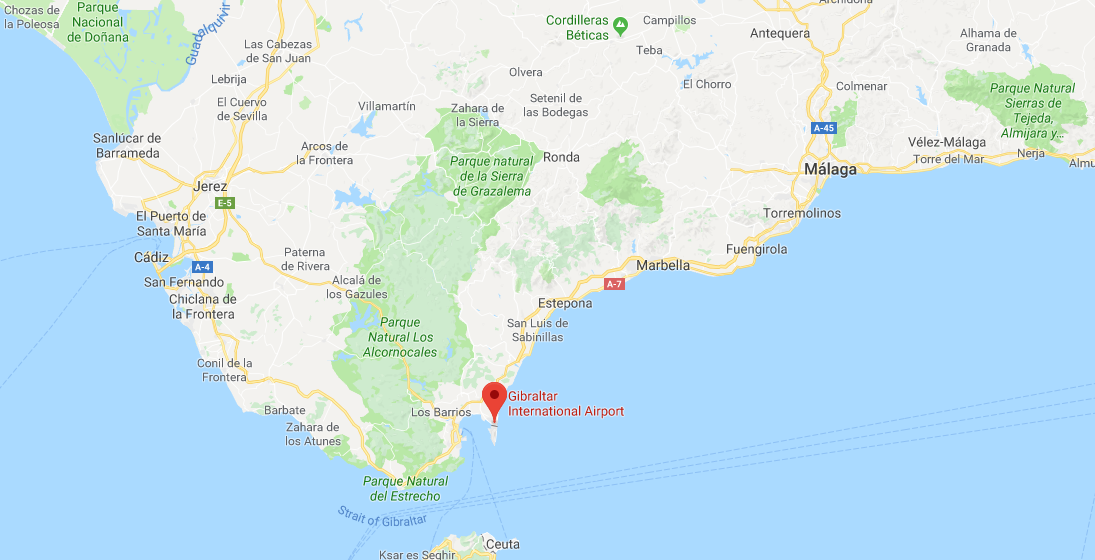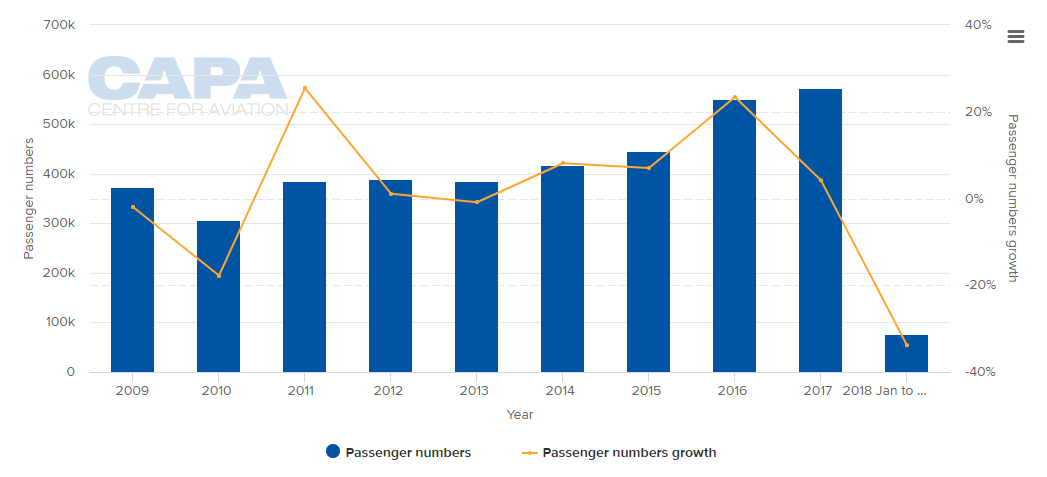Highlights:
- Despite a previously strong stance, the UK has opened the door to jointly managing North Front Airport in the British overseas territory of Gibraltar;
- Co-management of the airport is one way of ensuring Gibraltar maintains its important air connectivity in a post-Brexit environment;
- A significant complicating factor could be that the airport's runway is owned by the UK Ministry of Defence for use by the Royal Air Force;
- The airport handles over 500,000 annual passengers in 2017, but has been hit by the collapse of Manrch Airlines, formerly its largest operator.
The reaction to Brexit in Gibraltar might not be what was anticipated from a population which is close to 100% in favour of British rule. Only 823 people out of 20,145 votes cast preferred Britain to leave the EU but the majority were fearful that a Leave vote would boost Spanish demands for the return of Gibraltar. As it happens Spain decided to pursue that option anyway, insisting that the "negotiations" over the UK's exit in Mar-2019 must include Gibraltar's status, although that has been pushed aside by the thornier issue of the border between the UK and Ireland.
When the British government hinted that it would be prepared to go to war over Gibraltar the rhetoric quickly wound down but still persists in Spain's position on whether or not Gibraltar shares British post-Brexit access to European markets. Potentially, it could be isolated. Co-management of the airport is one way of assuaging the dispute.
Gibraltar has been a British territory since 1713 though Spain has consistently disputed its sovereignty. Communities on both sides of the border have always been tightly integrated though, with thousands of Spaniards crossing the frontier each day to work, many of them from La Línea de La Concepción and the larger Algeciras across the bay, both of which have high rates of unemployment.
At the same time many UK tourists arrive in Gibraltar to travel on to Spain's Costa del Sol (the upmarket Marbella resort lies half way between Gibraltar and Málaga) or the nearby Campo de Gibraltar, which is less developed. Some even use Gibraltar to access Sevilla, which is growing in importance as a short break vacation city.
MAP - Gibraltar is a British Overseas Territory and headland, on Spain's south coast, dominated by the Rock of Gibraltar, a 426m-high limestone ridge Source: Google Maps
Source: Google Maps
Intriguingly, the dispute with Spain is over the sovereignty of Gibraltar itself but also specifically with the territory where the airport is constructed. An agreement was signed in 1987 to allow the joint civil use of the airport, whose northern fringes border La Línea de La Concepción, which included the building of a new terminal in La Línea, but that agreement was blocked by Gibraltar and never implemented.
Thereafter Spain excluded Gibraltar from the Single European Sky initiatives, thereby preventing flights from Gibraltar to the EU with the exception of the UK, on the basis that no regulation recognising the sovereignty of the UK over Gibraltar could be implemented with the fulfilment of the previous agreement on the terminal.
Some amendments were made in the 2006 Córdoba Agreement, which allowed tripartite negotiations between the UK, Spain and Gibraltar, and for flights between Spain and Gibraltar.
A new agreement on co-management could see the terminal being extended on the Spanish side in tandem with enhancement of rail services, thereby attracting more companies to the area and improving employment prospects.
There is one significant complicating factor however, which is that the runway is owned by the UK Ministry of Defence for use by the Royal Air Force; it is only the terminal which is a civilian facility. The MOD could take a more entrenched attitude about the airport if it became a 50% Spanish one in its civilian guise.
CHART - The airport recorded its highest annual passenger total of 571,000 in 2017, but the demise of Monarch Airlines has impacted it hard and resulted in a reduction in passenger numbers of almost 34% in 1Q2018 Source: CAPA - Centre for Aviation and airport reports
Source: CAPA - Centre for Aviation and airport reports
On the other hand the US Navy for many years owned the runways at Keflavik Airport in Iceland, requiring civilian passengers to pass through military checkpoints to board their aircraft before a new terminal was built in 1987, so arrangements like this can be accommodated. (The US military is returning to Keflavik, to a new base there so that problem might be about to rear its head again).
Despite the influence of the airport across a wide geographical area, the EU flight limitations have severely limited its growth prospects. So the result of this proposed shared responsibility for the airport will be watched with anticipation and especially so by airlines which would welcome an alternative gateway to a wide coastal and inland area.